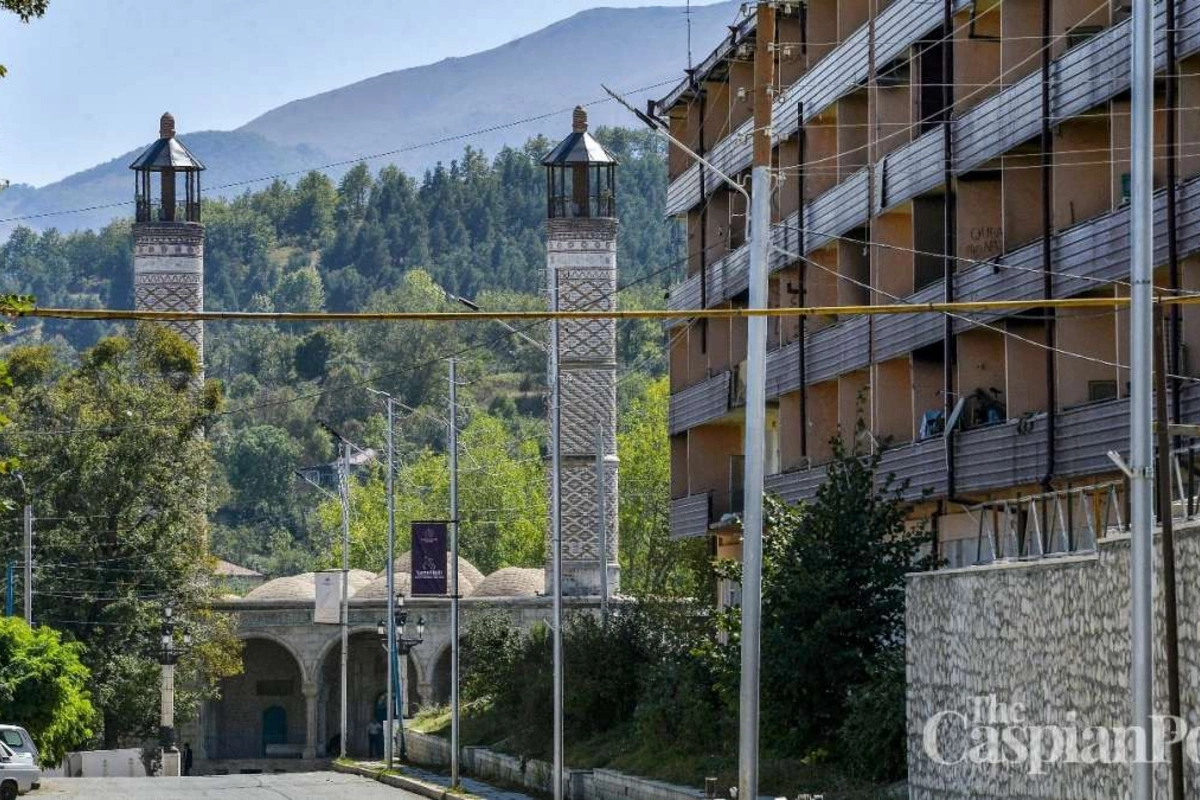
Shusha, Karabakh, Azerbaijan
Photos by Orkhan Azim
The city of Shusha holds an enormously important place in the hearts of Azerbaijanis as one of the country’s most important historic cities of art and culture. For nearly 30 years, songs of lament wept over its occupation by Armenians. Then, in November 2020, the Second Karabakh War culminated in the city’s recapture by the Azerbaijani army. Ten months after that pivotal battle, photographer Orkhan Azim visited Shusha via a freshly paved new road and sent this pictorial snapshot.
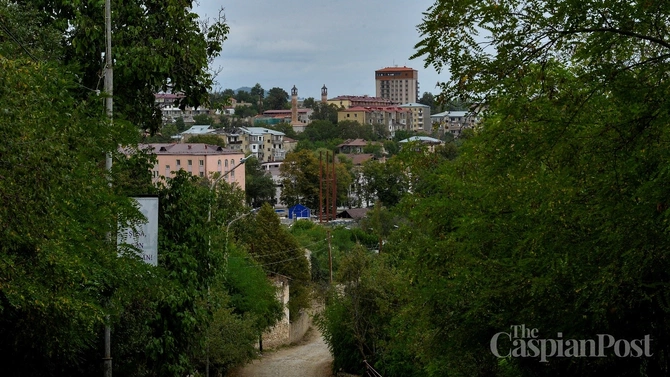
From some angles, the leafy city looks reasonably intact as though nothing had happened. The Qarabagh Hotel, which dominates the upper town centre area, has been completely renovated and is now a rather

However, it doesn’t take much looking around to find ample scars of war.
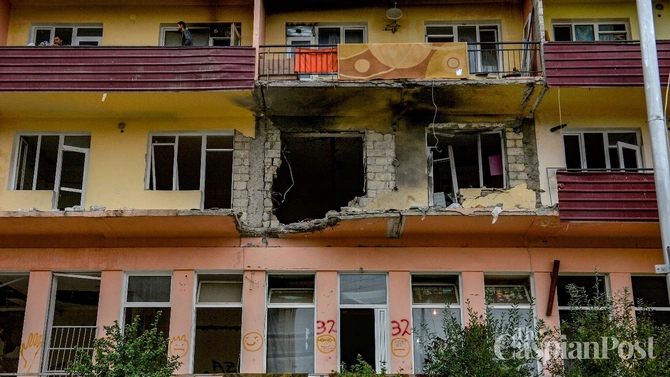
While some damage is recent, many of the ruins suggest buildings that have been left empty for years – quite probably since 1992 when the Azerbaijani population was forced to flee during the First Karabakh War.
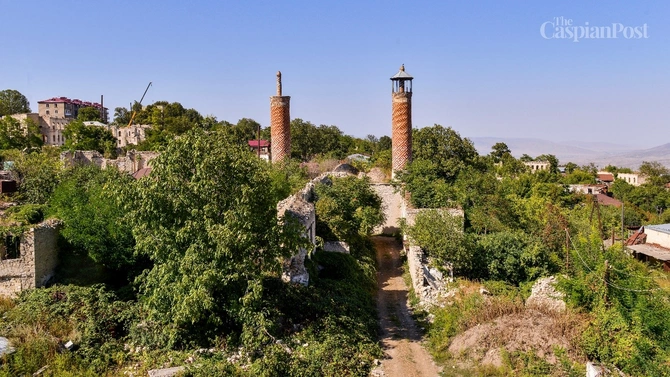
That’s apparently the case with the 1875 Lower Govher Mosque (Aşağı Gövhər Ağa Məscidi) whose brick minarets are repeatedly inscribed with the name of god and use a mix of white and red bricks to form Arabic calligraphy.

Inside, the bare-brick and stone pillars of the mosque are well preserved even though surrounding structures lie in fairly overgrown ruins.
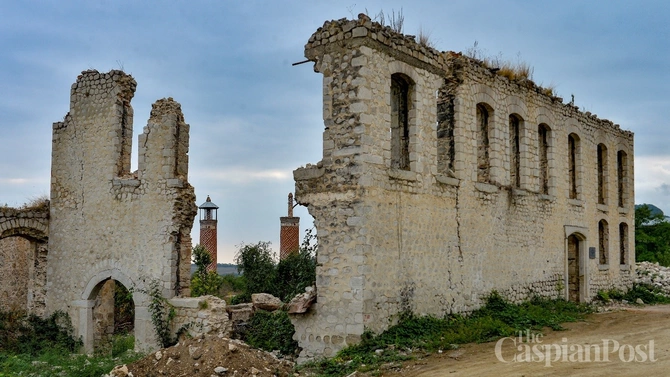
Only two sturdy stone walls remain of the Haji Memmed's House (Hacı Məmmədin evi), whose rooms were reputedly once richly decorated with murals. It’s on A. Qaraşərov küçəsi (formerly Leytinnat Schmidt Street) which is also the site of the Shirin-su ‘sweet water’ Hamam, an 18th-century stone bath-house restored around 1991.
Selectively photographed pictures of the bathhouse’s exterior are typically cropped to ignore the mouldering apartments that rise behind the attractive but graffiti-scrawled walls.
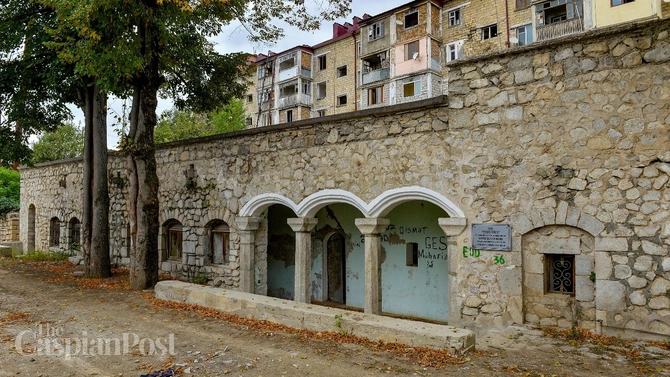
One of the cultural heroes of Soviet-era Azerbaijan, the operatic tenor Murtuza Mammadov was as famous in his homeland as Pavarotti or Plácido Domingo in the west. His voice was considered so melodic that he was nicknamed Bülbül, meaning nightingale.
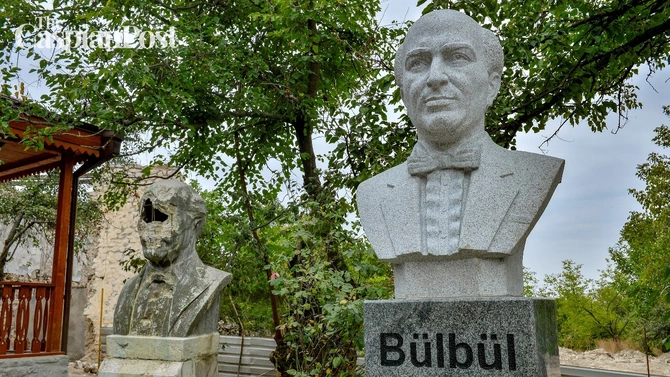
An attractive cottage that was said to be his childhood home operated as the ‘Bulbul House Museum’ until 1992. The building was damaged during the years of occupation, and the ferroconcrete bust outside was vandalized. However, a new version in granite of the latter has now been added.
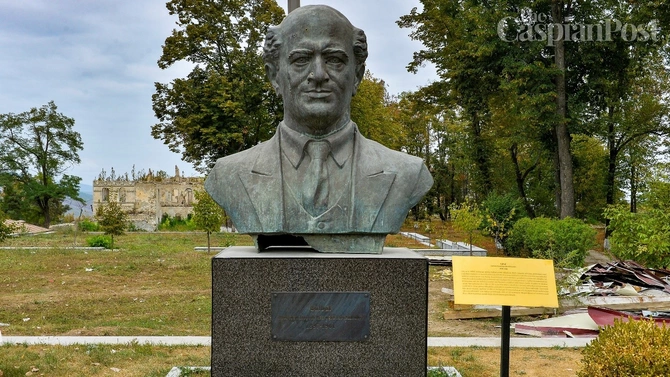
There’s a second, finer bust of Bulbul in Shusha. In bronze and with a straight tie rather than a bow, this is one of a trio of celebrated statues of Azerbaijani musicians and poets that were ripped down after Shusha was occupied in 1992. Taken to a Tbilisi scrap dealer’s yard, they were miraculously found there by the Azerbaijani authorities and brought back to Baku, where they sat forlornly outside the National Art Museum for years. All three have since been repaired and sent back to Shusha. The other two are of the great composer Uzeyir Hajibeyov (who we’ll meet later) and princess-poet Khurshidbanu Natavan (1832-1897), who once lived in the now-ruined building that’s visible behind the Bulbul bronze. Natavan – as her name is ubiquitously abbreviated – is connected to a great deal of Shusha’s history.

Cultured and wealthy, she sponsored many architectural and civic improvement projects in Shusha and led a prominent if vaguely bohemian poetry-arts circle. She even sent some of her splendid horses to perform at the 1867 Paris Expo. In the Soviet era, the sprawling three-storey mansion in which she had lived was converted into a music school (1932) before becoming a Natavan Museum in 1984. Today the building is a roofless shell with young trees starting to grow from exterior stonework, but still the most imposing of several buildings originally built for the royal family by the Khans of Karabakh. Natavan was the daughter (and only known offspring) of Mehdigoli, the last khan to rule before the kingdom was abolished by Russia.
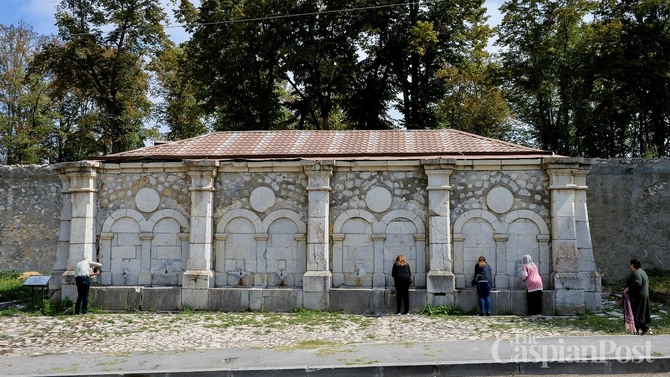
Though it doesn’t bear her name exactly, Shusha’s 19th-century water collection point hints strongly at a Natavan connection: its name “Khan Qizi Bulaq” means Spring of the Khan’s Daughter.
While it’s both a historic monument and a useful water source, for visitors to the Shusha, drinking a draft at the Khan Qizi Spring is also a symbolic moment of reconnection with the city.
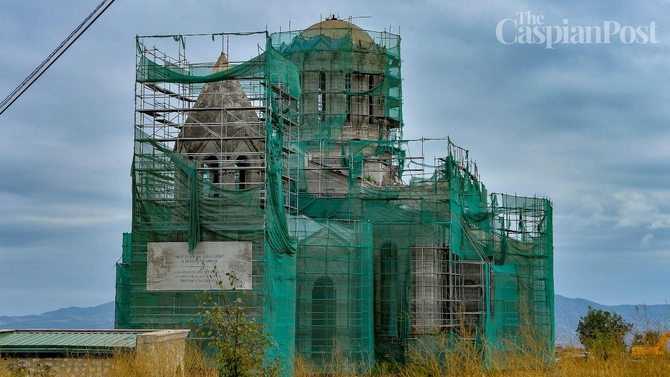
Elsewhere in the city, Qazanchi Church (known to Armenians as Ghazanchetsots Cathedral) is undergoing restoration to repair damage sustained during the 2020 conflict.

Several typical old-style stone houses, in various stages of decay, are accessed by winding lanes that curl up towards a viewpoint that allows wide panoramas back across the city.
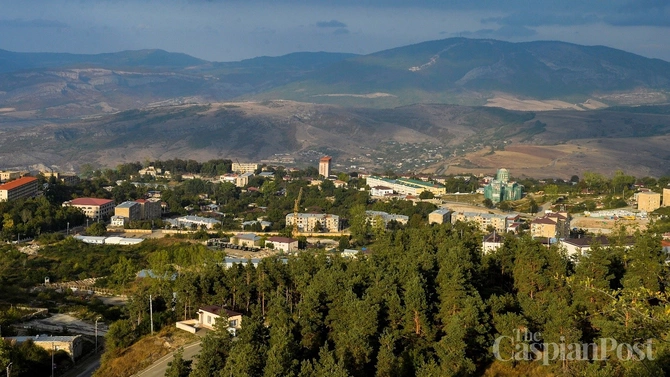
Though it’s flanked by some crushingly ugly Soviet-era housing blocks, the Upper Govher Agha Mosque (Yuxarı Gövhər Ağa məscidi) is arguably Shusha’s most iconic public building. It’s named for Govher (1790-1888), a fascinating woman who was the daughter of Karabakh’s Ibrahim Khan and granddaughter of a Georgian Prince. As a very young woman, she married – then cuckolded – the 60-year-old Khan of Sheki who had her lover killed but then died himself leaving Govher a beautiful widow of under 25. Unfortunately, her second marriage to a reportedly deranged millionaire didn’t last long either, and she was left as a wealthy widow to live out the rest of her very long life as a philanthropist. Once again, there’s a Natavan connection: Govher was the poet’s aunt and her role model.
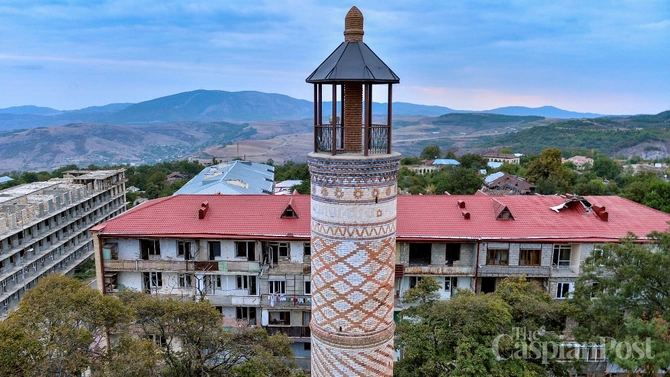
Two Shusha mosques bear Govher’s name in recognition of her sponsorship. The upper mosque had initially been conceived by her father long before she was born but had languished unfinished for over a century until, in her twilight years, Govher paid for its completion. After that, it became a symbol of the city. In the 1990s, during the long years that the city remained occupied, its twin minarets often acted as a symbol of loss for Azerbaijanis. The mosque even featured on Azerbaijani stamps. Shortly before Shusha was retaken by Azerbaijan, the building underwent an extensive restoration project.

The idea had been to make the building into an Armenian-Iranian Cultural Center since, at that time, the entire Muslim-Azerbaijani population had been exiled from the city. On November 13, 2020, however, just days after retaking the city in an

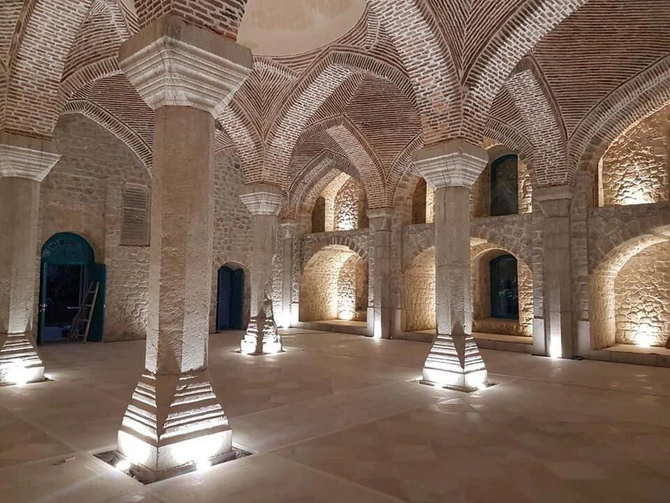
Interior of the Upper Govher Agha Mosque as of May 2020. Image: Adlerbran/CC BY-SA 4.0
Yet to see any reconstruction is the former house-museum of the great Azerbaijani composer, conductor and artistic all-rounder Uzeyir Hajibeyli (1885-1948), also known as Hajibeyov or, to Russians, as Gadjibekov. Seen as the father of Azerbaijani opera and orchestral composition, he wrote the (different) national anthems used in both Soviet and independent Azerbaijan. Though born in Aghjabedi, he grew up in Shusha, where both of his parents worked for none other than Natavan herself.
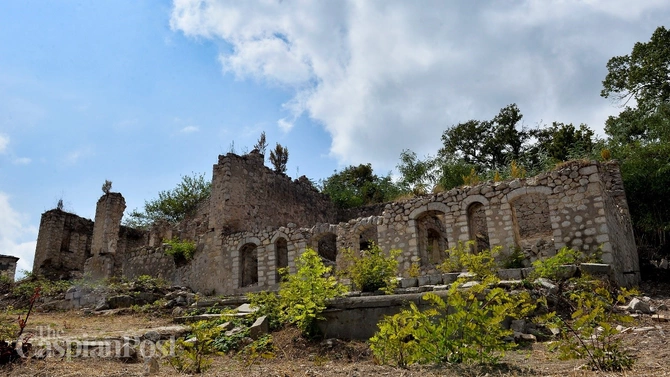
The heavily ruined former house of Uzeyir Hajibeyli.
The house where his family lived was a sturdy two-storey stone structure with a wooden stairway attached to a single-storey veranda-fronted extension, probably added in 1959 when the place was made into a museum in the composer’s honour. Despite some emergency cement repairs, the structure is in a perilous state of collapse, and restoration will take considerable effort. However, Shusha has a more immediate way to honour its great musician. Since 1995, Azerbaijan has celebrated Hajibeyli’s birthday, September 18, as "National Music Day," putting on impressive concerts around the country. For the first time, in 2021, the day will be celebrated in Shusha – the place which gave Hajibeyli so much of his early inspiration.
Though there remains a lot to do, for Azerbaijanis the ongoing resurrection of Shusha is a source of great national pride and optimism. It’s not just a case of rebuilding, but of building better. That’s symbolised for many by the four giant letters that top Shusha’s fortress walls spelling out the city name. When residents were forced to flee in 1992, the letters that bade them a sorrowful farewell were in faded red Cyrillic (Шуша).
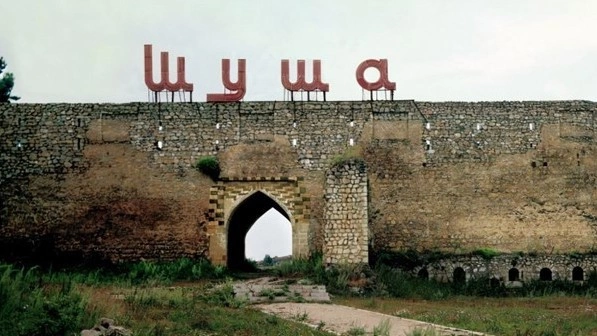
The sign that welcomes them back again is in bright scarlet Azerbaijani (Şuşa).

Share on social media